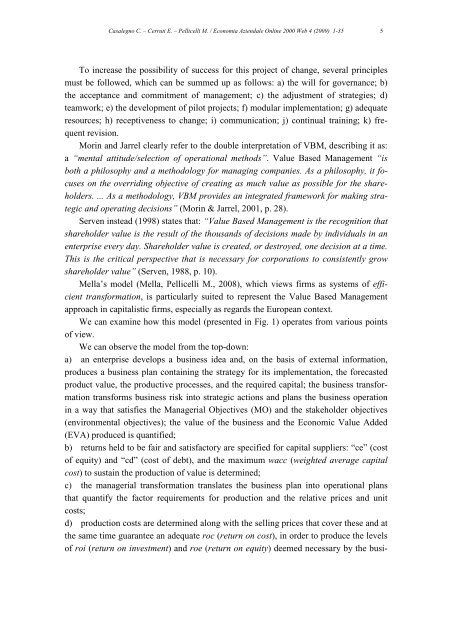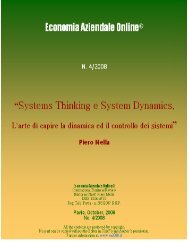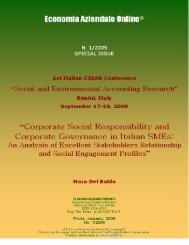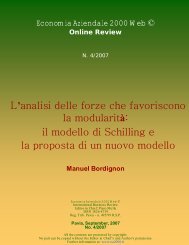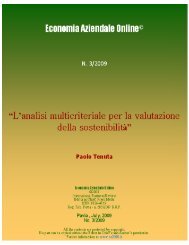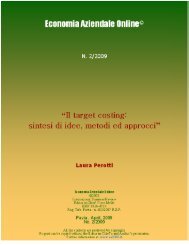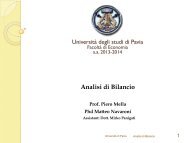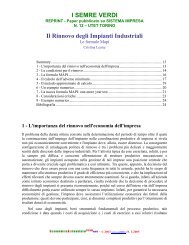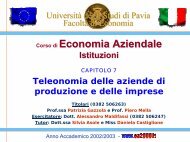Download this PDF file - Riviste
Download this PDF file - Riviste
Download this PDF file - Riviste
You also want an ePaper? Increase the reach of your titles
YUMPU automatically turns print PDFs into web optimized ePapers that Google loves.
Casalegno C. – Cerruti E. – Pellicelli M. / Economia Aziendale Online 2000 Web 4 (2009) 1-35 5To increase the possibility of success for <strong>this</strong> project of change, several principlesmust be followed, which can be summed up as follows: a) the will for governance; b)the acceptance and commitment of management; c) the adjustment of strategies; d)teamwork; e) the development of pilot projects; f) modular implementation; g) adequateresources; h) receptiveness to change; i) communication; j) continual training; k) frequentrevision.Morin and Jarrel clearly refer to the double interpretation of VBM, describing it as:a “mental attitude/selection of operational methods”. Value Based Management “isboth a philosophy and a methodology for managing companies. As a philosophy, it focuseson the overriding objective of creating as much value as possible for the shareholders.... As a methodology, VBM provides an integrated framework for making strategicand operating decisions” (Morin & Jarrel, 2001, p. 28).Serven instead (1998) states that: “Value Based Management is the recognition thatshareholder value is the result of the thousands of decisions made by individuals in anenterprise every day. Shareholder value is created, or destroyed, one decision at a time.This is the critical perspective that is necessary for corporations to consistently growshareholder value” (Serven, 1988, p. 10).Mella’s model (Mella, Pellicelli M., 2008), which views firms as systems of efficienttransformation, is particularly suited to represent the Value Based Managementapproach in capitalistic firms, especially as regards the European context.We can examine how <strong>this</strong> model (presented in Fig. 1) operates from various pointsof view.We can observe the model from the top-down:a) an enterprise develops a business idea and, on the basis of external information,produces a business plan containing the strategy for its implementation, the forecastedproduct value, the productive processes, and the required capital; the business transformationtransforms business risk into strategic actions and plans the business operationin a way that satisfies the Managerial Objectives (MO) and the stakeholder objectives(environmental objectives); the value of the business and the Economic Value Added(EVA) produced is quantified;b) returns held to be fair and satisfactory are specified for capital suppliers: “ce” (costof equity) and “cd” (cost of debt), and the maximum wacc (weighted average capitalcost) to sustain the production of value is determined;c) the managerial transformation translates the business plan into operational plansthat quantify the factor requirements for production and the relative prices and unitcosts;d) production costs are determined along with the selling prices that cover these and atthe same time guarantee an adequate roc (return on cost), in order to produce the levelsof roi (return on investment) and roe (return on equity) deemed necessary by the busi-


